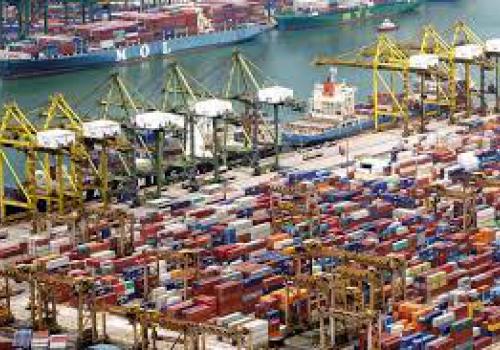Sri Lanka’s trade deficit contracted significantly, as imports declined and exports recovered from the impact of COVID-19 second wave, the Central Bank reported Friday in its External Sector Performance review for the month. The trade deficit narrowed to US$ 562 billion in December 2020 compared to the deficit of US$ 784 million recorded in December 2019 due to a larger decline in imports compared to the decline in exports. On a cumulative basis, the trade deficit contracted to US$ 5.978 billion in 2020 from US$ 7.997 billion in 2019. Earnings from merchandise exports recovered to a great extent in December 2020 from the setback suffered in the previous two months due to the second wave of the pandemic, the Central Bank said. Earnings from exports in December 2020 were recorded at US$ 964 million with a marginal decline of 3.5 percent from the US$ 1 billion recorded in December 2019. Gradual easing of lockdowns in Sri Lanka and improved demand from export destinations contributed to this outcome.
Earnings from the export of industrial goods declined by 5.4 percent in December 2020 compared to December 2019, mainly due to the decline in the export of textiles and garments by 6.5 percent and the decline in the export of petroleum products by 43.6 per cent. Export earnings from agricultural goods increased by 4.1 percent in December 2020 compared to December 2019. Cumulatively, earnings from exports in the year 2020 amounted to US$ 10.077 billion, recording a decline of 15.6 percent from the previous year. Merchandise imports declined in December 2020 compared to 2019, continuing the year-on-year declining trend observed since March 2020, mainly due to relatively low crude oil prices and restrictions imposed by the Government on the importation of non-essential goods. Expenditure on merchandise imports declined by 14.4 percent to US$ 1.527 billion in December 2020 compared to December 2019. Declines recorded in all three major categories of imports, namely, consumer, intermediate, and investment goods, contributed to this outcome.
Total expenditure on imports amounted to US$ 16.055 billion in 2020, recording a 19.5 percent reduction from 2019. With the launch of the pilot project to resume tourism, 393 tourist arrivals were recorded in December 2020. Accordingly, cumulative earnings from tourism, which are estimated based on tourist arrivals, amounted to US$ 957 million in 2020. Meanwhile, workers’ remittances grew for the seventh consecutive month, recording a healthy growth of 22.2 percent in December 2020, year-on-year, to US$ 813 million. The improvement observed from June 2020 helped workers’ remittances to record a year-on-year growth of 5.8 percent in 2020, to reach US$ 7.104 billion during the year.
Foreign investment in the government securities market recorded a marginal net outflow during the month, the Bank said. Gross official reserves at end December 2020 amounted to US$ 5.7 billion. This level was equivalent to 4.2 months of imports. Total foreign assets, which consist of gross official reserves and foreign assets of the banking sector, amounted to US$ 8.5 billion at end December 2020, providing an import cover of 6.4 months. A notable depreciation pressure on the Sri Lankan rupee was observed during December 2020. Overall, the rupee recorded a depreciation of 2.6 percent against the US dollar in 2020.
